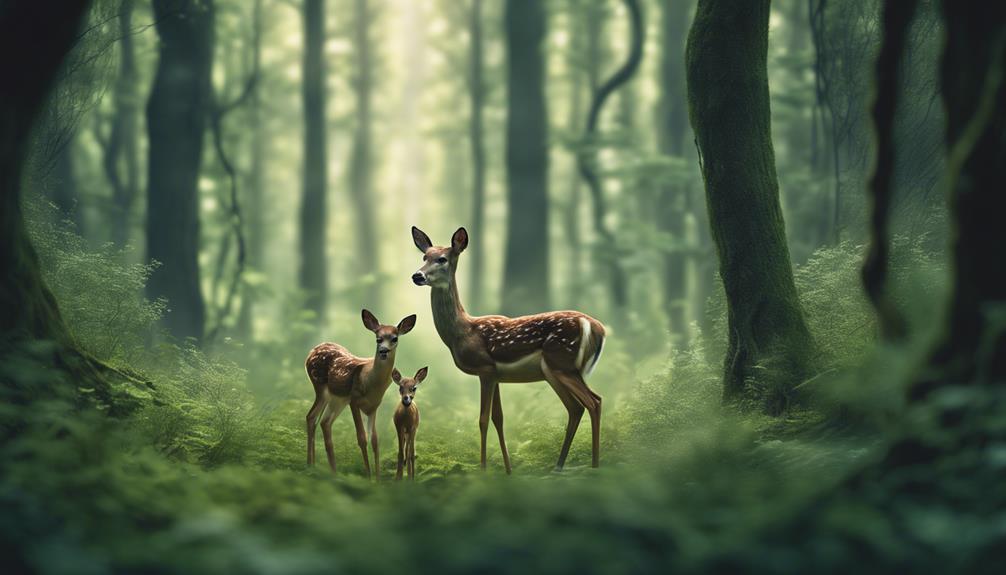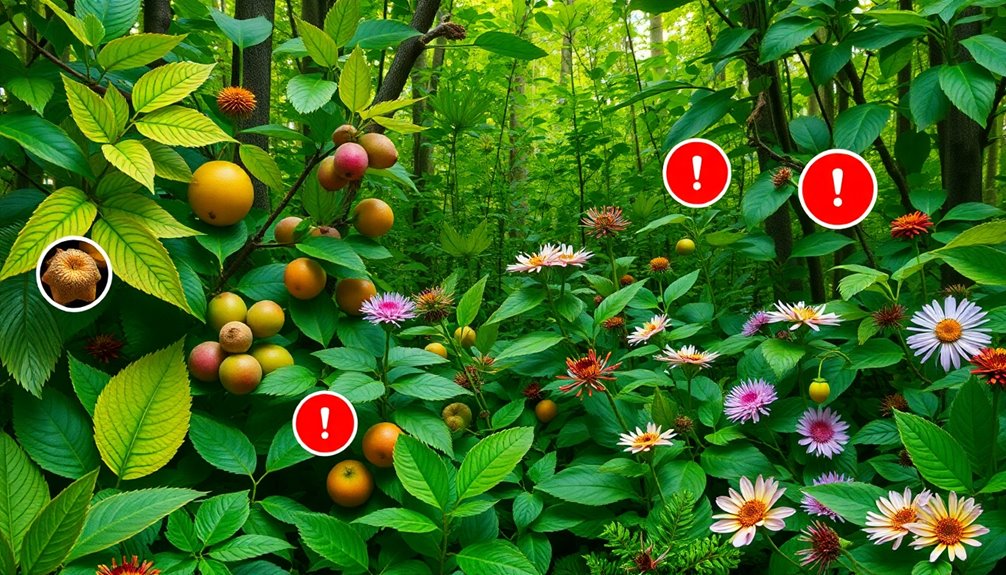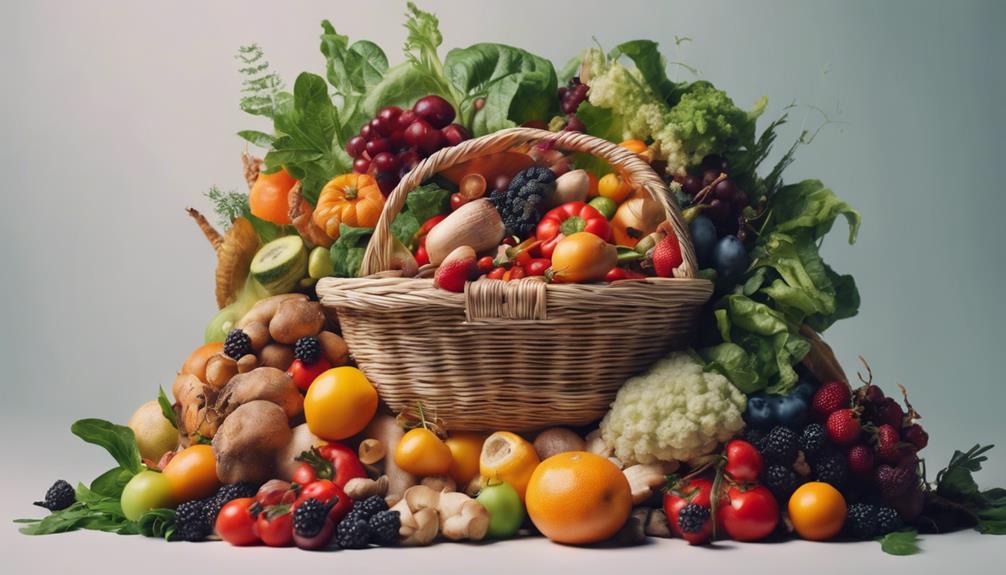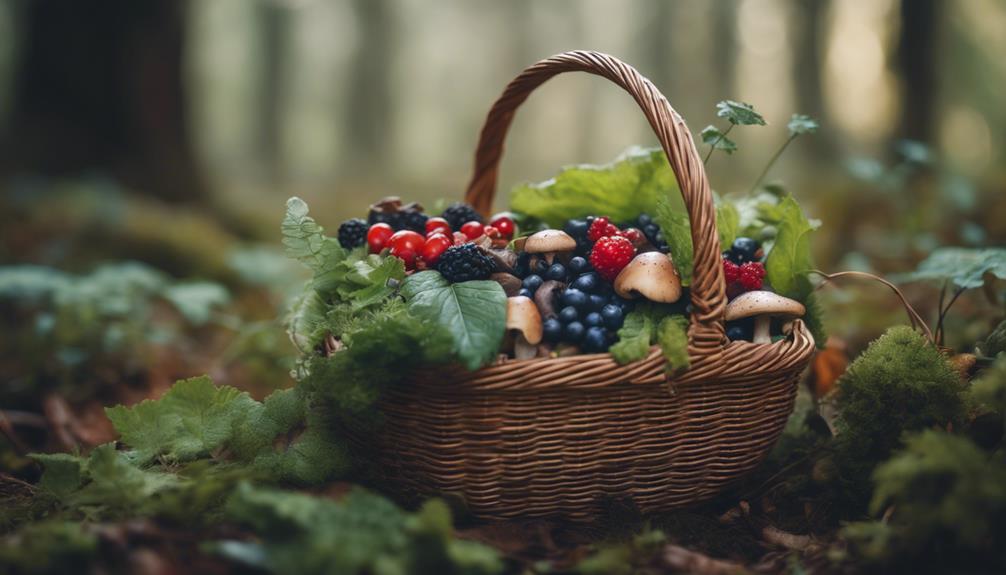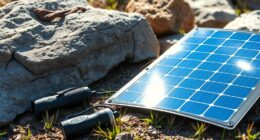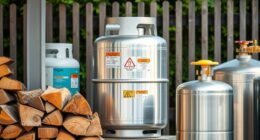When you forage, you affect the environment in significant ways. Responsible foraging promotes ecological balance, biodiversity, and sustainable agriculture, reducing the need for synthetic fertilizers and pesticides. However, unsustainable practices can lead to species decline, ecosystem degradation, and biodiversity loss. By adopting mindful harvesting methods and respecting local regulations, you can minimize negative impacts and maintain a healthy balance between human needs and nature's well-being. As you explore the world of foraging, keep in mind that your choices have consequences – and discovering more about sustainable foraging practices will help you make a positive difference.
Key Takeaways
- Sustainable foraging practices reduce environmental impact by promoting ecological conservation, sustainable agriculture, and biodiversity.
- Over-harvesting can lead to ecosystem degradation, biodiversity loss, and species population decline if not done responsibly.
- Foraging can mitigate climate change by reducing the need for industrial farming, synthetic fertilizers, and pesticides.
- Mindful harvesting methods, selective picking, and leaving roots intact promote plant regeneration and ecosystem sustainability.
- Irresponsible foraging practices can disrupt ecosystems, threaten species survival, and contribute to habitat destruction and biodiversity loss.
Environmental Impacts of Foraging
As you venture into the world of foraging, have you paused to reflect on the profound environmental impacts of this ancient practice?
Foraging, surprisingly, has a significant positive effect on the environment. By choosing wild food, you're reducing the need for synthetic fertilizers and pesticides, promoting ecological conservation, and supporting sustainable agriculture.
This, in turn, helps protect marine species biodiversity by reducing pollution from industrial agriculture. Foraging also limits the use of toxins, invasive machines, and degrading practices, preserving natural soil conditions.
By promoting biodiversity, foraging contributes to a more sustainable alternative to industrial farming and reduces negative environmental impacts. As you explore the world of foraging, remember that your actions have a ripple effect on the environment. The importance of foraging lies in its ability to reconnect individuals with their local ecosystems, fostering a deeper appreciation for natural resources. It encourages sustainable harvesting practices that ensure long-term ecological balance, while also reducing reliance on harmful agricultural methods. By making mindful choices, foragers help maintain the health and diversity of their surroundings.
Sustainable Foraging Practices Matter

When you forage sustainably, you're not only ensuring the long-term health of the plants you harvest, but also maintaining ecological balance. Mindful harvesting methods, such as selective picking and avoiding over-harvesting, are vital in preserving the natural environment.
Mindful Harvesting Methods
By adopting mindful harvesting methods, you can guarantee that the plants you forage will continue to thrive, and their ecosystems will remain intact. Sustainable foraging practices, like selective picking and leaving roots intact, promote plant regeneration and ecosystem sustainability. This approach assures that you're not over-harvesting, which can lead to the decline of plant populations.
Ethical foraging practices, such as using sharp tools and minimizing damage to plants, also contribute to environmental conservation. Additionally, responsible foraging involves knowing local laws, avoiding threatened species, and staying on designated trails to protect ecosystems. By adopting these mindful harvesting methods, you'll be supporting biodiversity and promoting sustainable harvesting practices.
This, in turn, helps preserve natural habitats and maintains ecosystem sustainability. Remember, every action you take while foraging has a ripple effect on the environment. So, make a conscious effort to adopt mindful harvesting methods, and you'll be doing your part to protect the environment.
Ecological Balance Maintenance
You're about to discover how sustainable foraging practices play an essential role in maintaining ecological balance, and why adopting these methods is key to preserving the delicate harmony of our ecosystems.
By adopting sustainable foraging practices, you're contributing to the health of plant populations, which in turn supports ecological balance. Responsible foraging techniques, like selective harvesting and leaving roots intact, minimize damage to wild plants and respect their natural habitat. This approach promotes biodiversity and environmental sustainability, ensuring the long-term health of ecosystems.
By practicing ethical foraging, you're avoiding threatened species and following local regulations, which guarantees minimal negative impact on the environment. Sustainable foraging plays an essential role in preserving plant populations, protecting wildlife habitats, and promoting ecosystem health.
Over-Harvesting Consequences Revealed

When you explore the world of foraging, it's important to acknowledge that excessive harvesting can have devastating consequences, such as the decline of plant populations and disruption of delicate ecosystems. Over-harvesting can lead to the decline of certain plant species, reducing biodiversity and impacting the food chain. If you're not careful, you might be threatening the survival of these plant species.
Depleted plant populations can also affect wildlife that rely on them for food and habitat, causing a ripple effect throughout the ecosystem.
As a responsible forager, it's vital to be aware of the consequences of over-harvesting. Uncontrolled harvesting can disrupt the balance of ecosystems, leading to long-term damage. By adopting sustainable foraging practices, you can help preserve the environment and maintain the continued availability of these plant species.
Ecosystem Degradation and Biodiversity Loss

As you explore the impacts of foraging on the environment, you'll notice a disturbing trend: habitat disruption patterns and species population decline are becoming more common.
When foragers disrupt natural habitats, it can lead to a ripple effect, causing entire ecosystems to suffer.
Habitat Disruption Patterns
Foraging activities can greatly disrupt natural habitats, leading to the depletion of plant populations and, subsequently, ecosystem degradation and loss of biodiversity. As you venture into the wild to forage, you may unintentionally harm the local environment. Over-harvesting can disturb the balance of local ecosystems, impacting the food chain and wildlife populations.
Here are some key ways foraging can disrupt habitats:
- Removal of key plant species can alter habitat structures, affecting the nesting and foraging behaviors of various species.
- Over-harvesting can lead to the depletion of plant populations, causing ecosystem degradation and loss of biodiversity.
- Foraging can disturb the soil, causing erosion and altering the local environment.
- Unsustainable foraging practices can reduce ecosystem resilience, making habitats more vulnerable to environmental changes.
Conservation efforts are necessary to mitigate the negative impacts of foraging on the environment and to maintain healthy, diverse ecosystems.
Species Population Decline
By depleting plant populations, unsustainable foraging practices can trigger a ripple effect, ultimately leading to species population decline and ecosystem degradation. You're not just picking a few wild edibles; you're disrupting the delicate balance of the ecosystem.
When you over-harvest plants, you're reducing their populations, which can have cascading effects on the entire ecosystem. For instance, the loss of key plant species can disrupt food chains, impacting other flora and fauna in the environment. This biodiversity loss reduces ecosystem resilience, making it harder for ecosystems to recover from natural disturbances or human impacts.
As a responsible forager, it's crucial to adopt sustainable practices, such as selective harvesting and leaving enough plants for reproduction. By doing so, you can help mitigate the negative impacts of foraging on species populations and ecosystem health.
Responsible Foraging for a Healthier Planet

You can make a significant impact on the environment by adopting responsible foraging practices that prioritize the well-being of ecosystems and biodiversity. By doing so, you'll not only guarantee the preservation of edible plant species but also contribute to environmental conservation and sustainability efforts.
Here are some ways responsible foraging benefits the environment:
- Promotes biodiversity: Sustainable foraging encourages the growth of diverse plant species, supporting a healthier ecosystem.
- Reduces pesticide use: Foraging decreases the need for harmful agricultural practices, preserving the environment and human health.
- Fosters a deeper connection with nature: Ethical foraging encourages a respect for the environment, promoting environmental stewardship.
- Supports ecosystem restoration: Responsible foraging practices help restore ecosystems, promoting environmental benefits.
- Conserves plant species: By foraging responsibly, you'll help maintain plant species, securing their survival for future generations.
The Dark Side of Foraging Exposed

Depleting plant populations and disrupting ecosystems, reckless foraging practices can have devastating consequences on the environment. As you venture out to forage, you may unintentionally contribute to species extinction, habitat destruction, and ecosystem disruption.
Over-harvesting can decimate plant populations, while invasive species can spread through your activities, impacting native biodiversity. You might disturb wildlife and plant communities, especially in sensitive habitats. Harvesting rare or endangered species can threaten their survival, and irresponsible foraging practices can lead to soil erosion and habitat destruction.
It's essential to remember that the benefits of foraging shouldn't come at the expense of the environment. As you forage, be mindful of your impact and take steps to minimize harm. Be aware of local regulations, respect protected areas, and avoid over-harvesting.
Foraging and Climate Change Connection

As you venture into the world of foraging, you're not only gathering wild edibles, but also unwittingly contributing to the fight against climate change.
The environmental benefits of foraging are multifaceted, and its impact on climate change is significant.
Here are a few ways foraging makes a difference:
- Reduces the environmental impact of industrial farming, which contributes to 26% of global greenhouse gas emissions
- Promotes organic practices, eliminating the need for synthetic fertilizers and pesticides that pollute water bodies
- Supports marine biodiversity by avoiding algal blooms caused by farming additives
- Offers a sustainable alternative to transportation and methane emissions from food production
- Minimizes agriculture-related pollution and supports sustainable agriculture practices
Balancing Human Needs With Nature

Harmony between human sustenance and nature's well-being hinges on adopting responsible foraging practices that prioritize ecological balance.
As you venture into wild spaces to forage for local plants, it's important to contemplate the environmental implications of your actions.
Sustainable foraging involves being mindful of the ecological consequences of harvesting and promoting biodiversity.
You can make a positive impact by choosing to forage in areas that are abundant with the plants you need, avoiding over-harvesting, which can disrupt ecosystems and threaten plant populations.
By adopting responsible practices, you can minimize the negative environmental impacts of foraging and help maintain a healthy balance between human needs and nature's well-being.
Remember, understanding the environmental impacts of foraging is vital for preserving the natural world while still meeting your needs. Balance is key, as over-harvesting can damage ecosystems and reduce biodiversity. By practicing sustainable foraging methods, you can help ensure that wild plants and animals continue to thrive. The importance of foraging extends beyond personal gain, fostering a deeper connection with nature and encouraging responsible stewardship of our shared environment.
A Call to Action for Sustainable Foraging

You're taking an essential step towards preserving ecosystems by embracing sustainable foraging practices. As you venture into the world of foraging, remember that your actions have a direct impact on local ecosystems. It's important to adopt sustainable methods to minimize ecological impacts.
Here are some essential tips to get you started:
- Respect plant populations: Avoid over-harvesting, and prioritize replenishing plant stocks to maintain biodiversity.
- Choose the right locations: Steer clear of protected areas and vulnerable habitats to prevent disrupting wildlife habitats.
- Be mindful of quantities: Only harvest what you need, and avoid depleting natural resources.
- Use responsible techniques: Avoid damaging plants or habitats during harvesting, and refrain from using harmful chemicals.
- Monitor harvesting dates: Adjust your foraging schedule to accommodate plant life cycles and prevent disrupting natural growth patterns.
Frequently Asked Questions
How Does Forage Affect the Environment?
You're wondering how foraging affects the environment. Well, by choosing wild, organic food, you reduce the need for industrial farming, which means less pollution, protected biodiversity, and healthier soil – a win for the planet!
How Does Foraging Help the Environment?
As you commence on a foraging journey, you're the conductor of an orchestra, harmonizing with nature. By foraging, you're reducing industrial farming's carbon footprint, promoting biodiversity, protecting soil and water, minimizing waste, and creating habitats for species, ultimately composing a symphony of sustainability.
Why Is Studying Foraging Important?
You study foraging because it's essential to understand its impact on biodiversity and ecosystem health, evaluating sustainability, and revealing ecological consequences of human interactions with wild plant species, ultimately guiding conservation efforts.
What Are Two Benefits of Foraging?
You'll discover that foraging offers two significant benefits: it promotes biodiversity by supporting the consumption of a wide variety of edible plant species, and it reduces your reliance on industrial agriculture, decreasing greenhouse gas emissions and water pollution.
Conclusion
As you forage, remember that every wild harvest has an impact.
Did you know that over-harvesting has led to the decline of over 30% of wild medicinal plants?
By adopting sustainable foraging practices, you can help preserve ecosystems and biodiversity.
Take the first step towards responsible foraging today, and together, we can guarantee a healthier planet for future generations.
Start making a positive impact – one harvest at a time.


